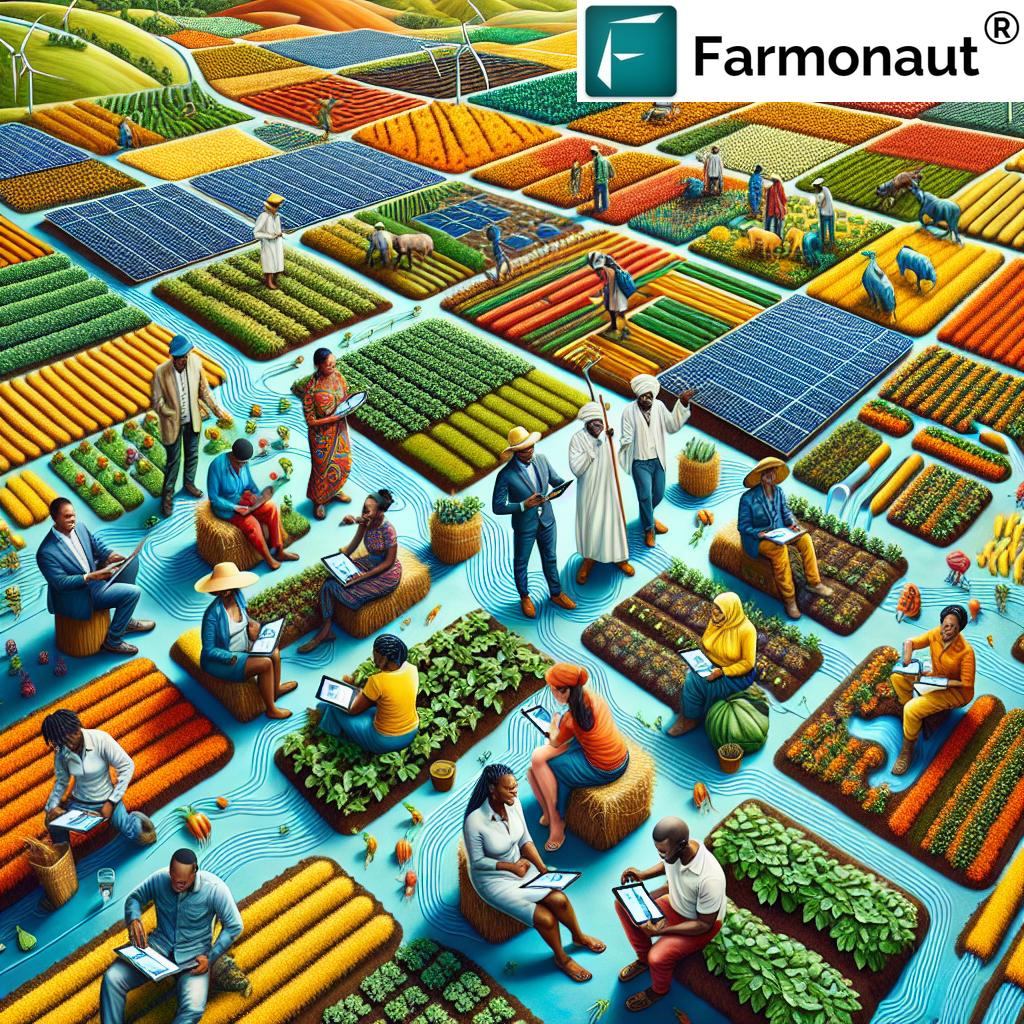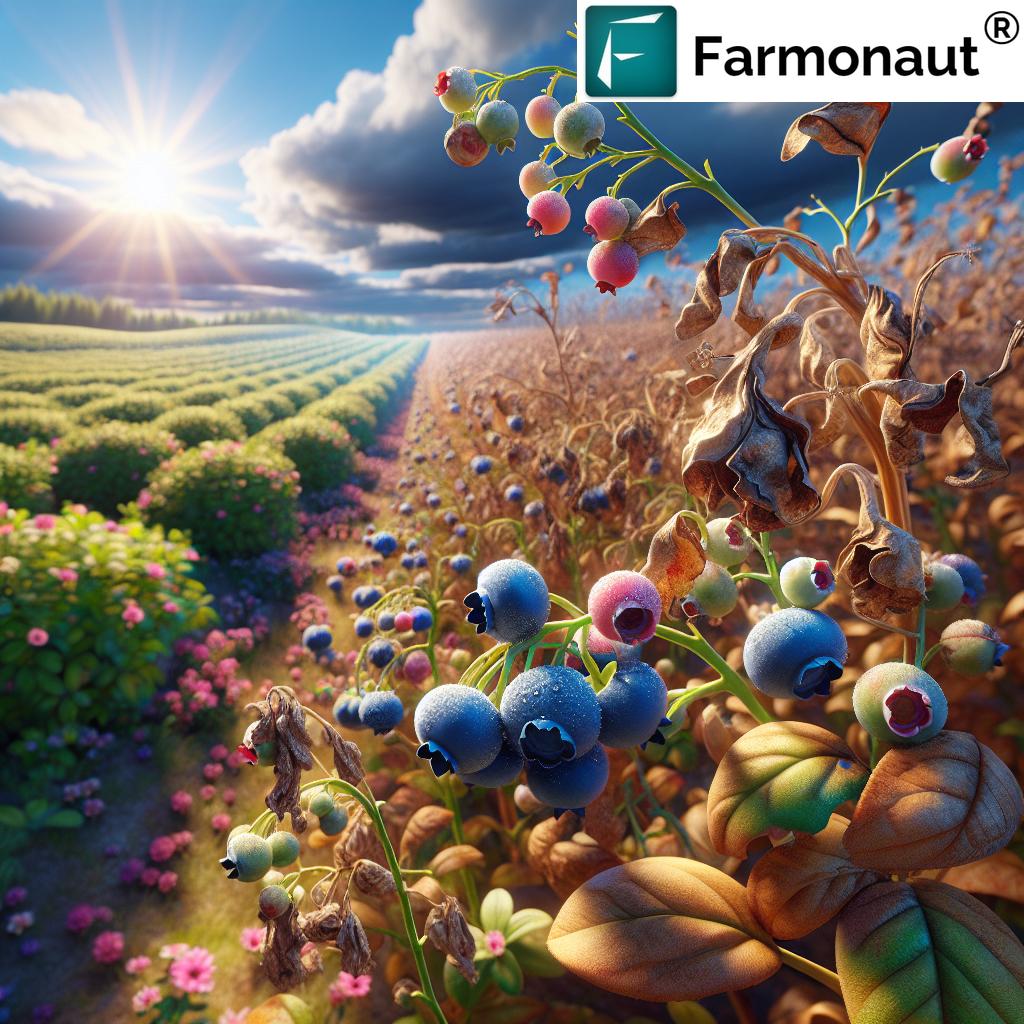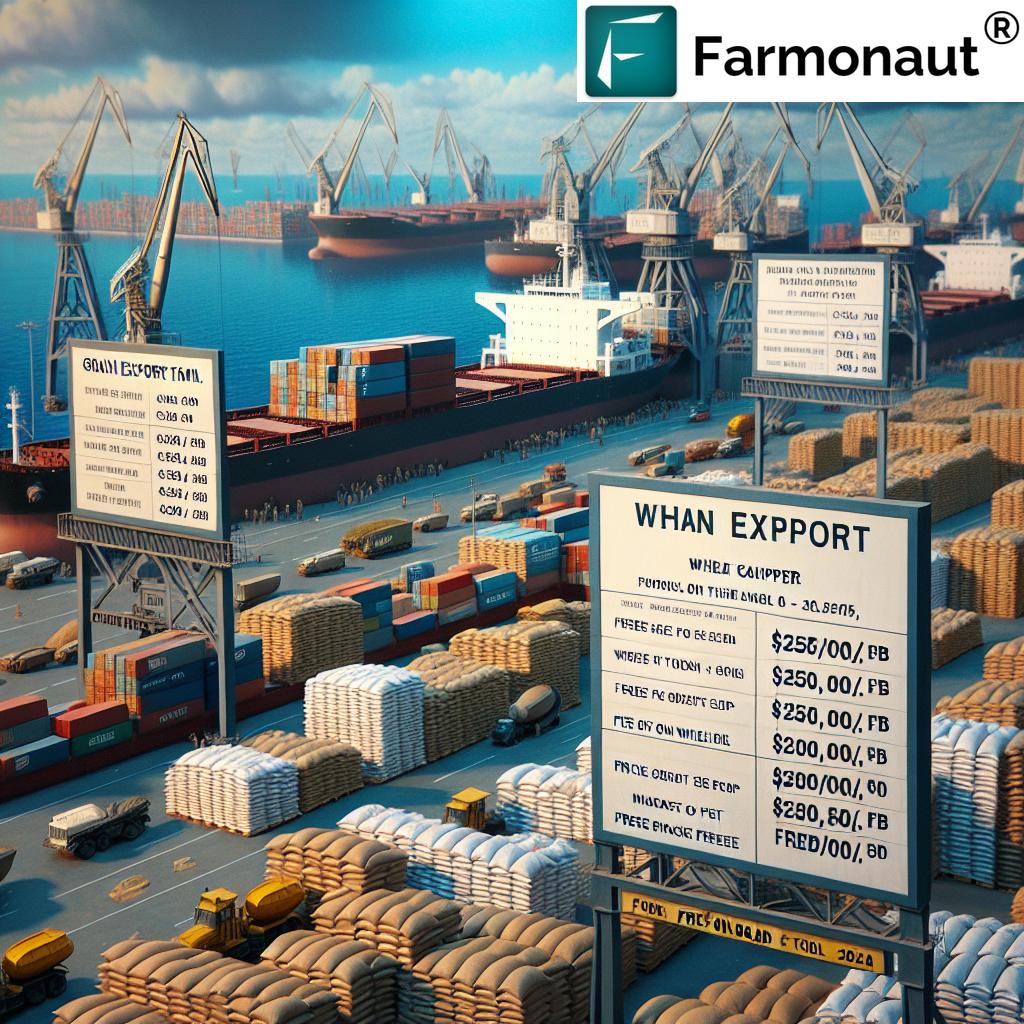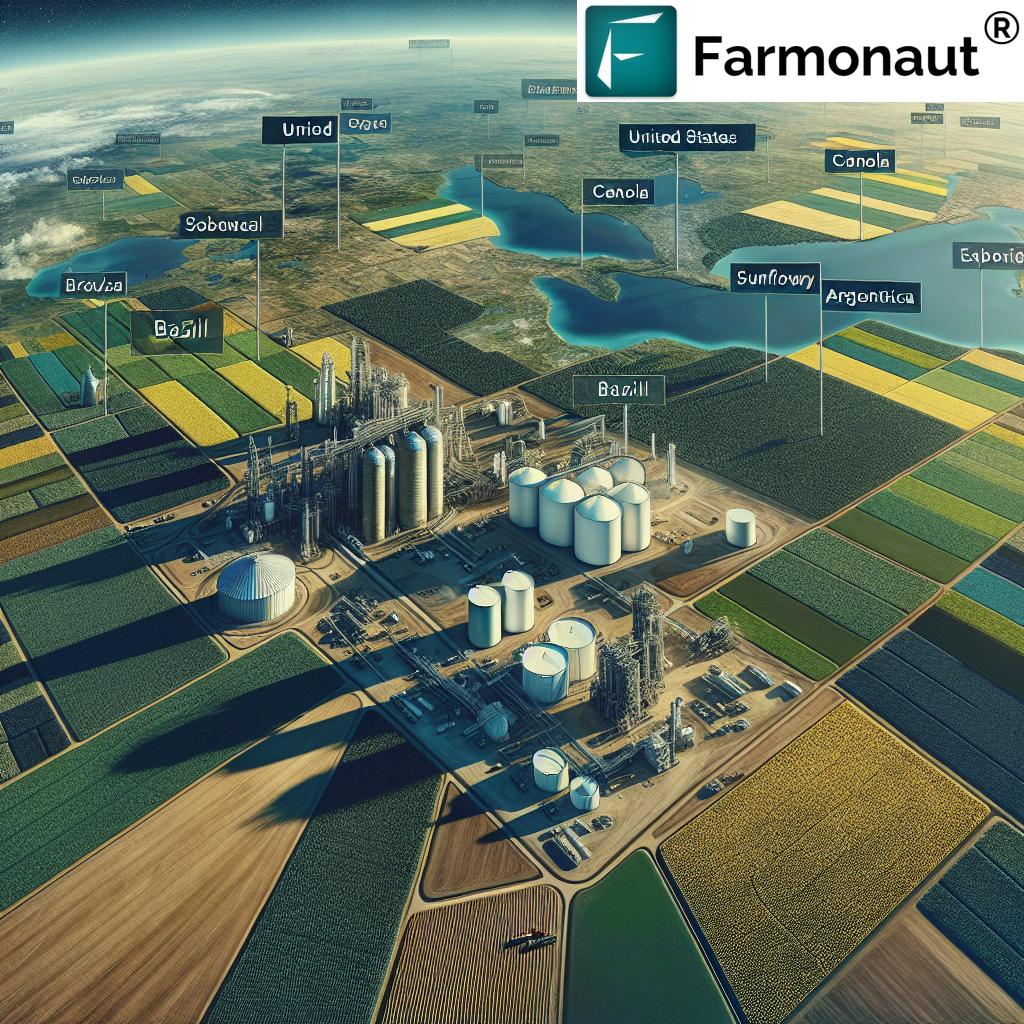“A 2025 ammonia shortage could reduce global almond yields by up to 30%, impacting nut availability and prices.”
Ammonia Shortage 2025: Almonds & Chicken Shortage
As 2025 unfolds, the global agricultural sector faces a critical challenge: the impending ammonia shortage 2025. Ammonia, primarily used as a key ingredient in nitrogen-based fertilizers, is fundamental to modern farming practices worldwide. Its availability and supply directly influences crop yields, food prices, and ultimately, global food security.
This comprehensive guide explores the causes behind the impending ammonia shortage 2025, its potential repercussions across food systems—such as an almonds shortage and lessons from the chicken shortage 2022—and how technological innovation and policies can address these agricultural challenges. We also highlight the role of satellite technology and data-driven solutions in supporting resilience and sustainability in agriculture.

Access Farmonaut’s Satellite Platform for Real-Time Crop and Fertilizer Insights
The Role of Ammonia in Modern Agriculture
Ammonia (NH3) is indispensable to agriculture, forming the backbone of nitrogen fertilizer production—especially critical fertilizers like urea and ammonium nitrate. It is a vital nutrient that supports:
- Plant growth and development
- Increases in crop yields (particularly for wheat, corn, rice and other staples)
- Improvement in food quality by ensuring balanced nutrition
Without adequate nitrogen fertilization, staple crops would see significant yield declines, ultimately leading to food shortages and pushing up global food prices. This makes securing a reliable ammonia supply essential for both food security and agricultural productivity worldwide.
“Chicken meat production may drop by 15% in 2025 unless innovations like green ammonia improve fertilizer access.”
Causes Behind the Ammonia Shortage 2025
The ammonia shortage 2025 results from several converging factors. Let’s analyze the key causes that have contributed to this critical challenge facing agriculture and food production in 2025:
1. Energy Price Volatility & Natural Gas Dependence
Ammonia production is a highly energy-intensive process, predominantly relying on natural gas as feedstock and as the energy source. Recent spikes in global natural gas prices, driven by geopolitical tensions and supply disruptions, have escalated production costs.
- Many ammonia plants had to cut output, or temporarily shutter operations, shrinking overall global ammonia supply.
- This created a chain reaction throughout fertilizer, crop yields, farming costs, and eventually, food supply chains.
2. Persistent Supply Chain Disruptions
Lingering aftereffects of the COVID-19 pandemic have been compounded by logistical bottlenecks and strained shipping routes. This has severely affected the movement of ammonia and all company fertilizers worldwide.
Slowdowns at ports, lack of transport capacity, and less efficient movement: all these impede the supply chain, making access to ammonia unpredictable and uneven across regions.
3. Environmental Regulations in Producing Regions
Stricter environmental policies—especially in major ammonia-producing regions—have required the closure of older, less sustainable ammonia plants. While this has benefits for emissions reductions, it has also tightened overall ammonia supply.
4. Increased Demand from Agriculture & Biofuels
With the global population rising and a growing demand for increased agricultural productivity, nitrogen fertilizer usage has surged. New biofuel industries— reliant on crops requiring ammonia-based fertilizers— further exacerbate ammonia demand.
5. Regional Geopolitics & Market Instability
Geopolitical tensions and market volatility— particularly in gas-rich regions—disrupt not just natural gas markets, but also ammonia production and exports, amplifying global supply risks.
Combined, these factors have contributed to an unprecedented ammonia shortage for 2025, signaling the need for technological and policy-based adaptations across agriculture and world food supply chains.
Impacts on Crop Yields, Food Supply, and Prices
A reduced ammonia supply in 2025 is more than a supply chain issue—it has deep implications for food security, crop yields, and price inflation throughout the global food system.
Higher Fertilizer Prices and Farmer Hardship
- Reduced ammonia availability has already driven up prices of nitrogen-based fertilizers worldwide.
- Input costs for farmers have risen sharply, particularly harming smallholder or marginal farmers who lack market power.
- Increased production costs could reduce planting of nitrogen-intensive crops, threatening food security and rural livelihoods.
Reduced Crop Yields and Productivity Loss
- For high-nitrogen crops like corn and wheat, experts estimate yield declines of 10-20% are likely if fertilizer application is reduced.
- Rice and other staples may also see significant declines, driving food shortages in vulnerable regions.
- This undermines efforts to maintain global food security as the population continues expanding.
Shift in Cropping Patterns and Diversification
- Farmers may shift to less nitrogen-intensive crops, affecting market availability and global crop diversification.
- This disrupts established agricultural supply chains, ultimately impacting food diversity and nutrition.
Price Inflation and Food System Ripple Effects
- Higher fertilizer costs cascade down to processors, retailers, and consumers.
- We could see widespread food price inflation similar to impacts felt during the chicken shortage 2022, but on a broader, multi-commodity scale—including nuts like almonds, animal feeds, and meat products.
- Almonds shortage and chicken meat shortages are likely to be headline features of the 2025 food supply landscape unless addressed.
The Almonds Shortage and Chicken Shortage: A 2025 Perspective
How Ammonia Shortage 2025 Fuels Almonds and Chicken Shortfalls
Ammonia shortage 2025 affects different sectors and commodities in unique, but interconnected, ways:
-
Almonds:
Almonds are nitrogen-intensive nut crops. A sustained ammonia shortage can reduce almond yields by up to 30%. This creates a true almonds shortage, with much less nut availability and sharply rising prices worldwide. -
Chicken:
Poultry feed production depends heavily on nitrogen fertilizers from ammonia for key ingredients (e.g., corn, soybeans). If costs soar and yields drop, chicken meat production could fall by 15% in 2025, echoing or even surpassing the chicken shortage 2022. Consumer prices—for chicken, eggs, and processed foods—are highly likely to spiral.
These shortages also exacerbate food security risks and worsen inflation across food sectors. Supply disruptions in one commodity ripple outwards, affecting everything from animal agriculture to dietary diversity.

Monitor Crop and Fertilizer Status Anywhere: Download the Farmonaut Android App
Projected Impact of Ammonia Shortage 2025 on Almond and Chicken Supply, with Innovative Solutions
| Crop/Livestock | Current Annual Output (Est.) | Projected Output 2025 (Change) | Fertilizer Requirement Impact | Potential Food Price Increase (%) | Technological/Innovative Solutions |
|---|---|---|---|---|---|
| Almonds | 1.4 million tons | -30% (down to ~0.98 million tons) | Shortage of 25–35% fertilizer required | 15–40% |
|
| Chicken | 98 million tons | -15% (down to ~83 million tons) | Feed input cost up 20–35% | 10–25% |
|
Innovation and Technology for Ammonia Shortage Solutions
To address the ammonia shortage 2025 and safeguard almond and chicken supply, stakeholders must embrace technological innovation and sustainable agricultural practices.
Key Technological Approaches:
-
Green Ammonia Production:
By producing ammonia using renewable hydrogen (electrolysis-based) instead of fossil fuels, the fertilizer industry can cut its dependency on natural gas and reduce carbon emissions. Though current price and scale are limiting, rapid research and pilot plants are laying the groundwork for a more resilient future. -
Precision Agriculture & AI:
Data-driven tools—such as satellite crop monitoring, AI-based fertilizer advisory, and real-time nutrient analysis—ensure maximum yields with minimum input. Platforms like Farmonaut (explored below) enable farmers and businesses to monitor crop health, resource use, and optimize fertilizer application. -
Blockchain-Based Traceability:
Using blockchain-secured systems, food and fertilizer supply chains can improve authenticity, prevent fraud, and enhance transparency—critical as shortages worsen the potential for counterfeit or adulterated products. (Explore Traceability Solutions) -
Satellite Resource Management:
Advanced satellite-based monitoring supports efficient land, water, and fertilizer use across broad regions. This also supports climate-adaptive strategies by tracking environment, soil health, and carbon impact (Carbon Footprinting). -
Crop Diversification and Adaptive Sourcing:
Alternative crop adoption, diversified fertilizer sourcing, and regional adaptability reduce singular dependency on high-nitrogen inputs, mitigating risk amid shortages.

Access Farmonaut on iOS for Satellite-Driven Ag Insights During Fertilizer Shortages
Satellite Technology & Digital Tools: The Farmonaut Approach
Addressing the ammonia shortage 2025 requires not only scientific innovation, but also robust data infrastructure and affordable access to agricultural insights at scale.
At Farmonaut, we bridge this gap by leveraging satellite imagery, AI-powered monitoring, blockchain solutions, and resource management tools that empower farmers, businesses, and governments worldwide. Here’s how our platform is relevant in times of critical shortage:
-
Satellite-Based Crop Monitoring:
We provide real-time NDVI-based monitoring of crop health, enabling early detection of nitrogen stress, fertilizer application needs, and overall productivity. -
Jeevn AI Advisory:
Our AI helps identify the optimal use of fertilizer inputs, supporting farmers and agribusinesses in practicing precision agriculture, minimizing waste and maximizing returns under limited supply. -
Blockchain Traceability:
We enhance confidence and transparency across fertilizer, food, and crop supply chains, reducing risks of fraud or adulterations, especially critical during shortages. -
Environmental Impact & Carbon Monitoring:
Our platform enables tracking of farm and food chain carbon footprint (Carbon Footprinting Tool), informing sustainable strategies for compliance with environmental regulations. -
Fleet and Resource Management:
Our fleet tracking solution (Learn More About Fleet Management) helps agricultural businesses optimize logistics for fertilizer and product transport, reducing costs during volatile times. -
Support for Financial Institutions:
We enable satellite-based verification of agricultural fields and insurance claims (Crop Loan & Insurance Management), supporting access to financing during uncertain market conditions. -
APIs for Integration:
Our open API suite (API Access, API Developer Docs) lets agribusinesses, supply chain providers, and governments embed satellite-driven insights for workflows, logistics, and real-time monitoring.
By lowering cost barriers and providing innovative, user-friendly solutions, we help the agriculture sector confront the fundamental challenge of an ammonia shortage 2025 and equip stakeholders for a sustainable, resilient future.
Policies and Global Coordination for Fertilizer Security
The ammonia shortage 2025 underscores an urgent need for coordinated policy responses at local, regional and global scales:
- Support for Green Fertilizer Infrastructure: Accelerated investment and transition incentives for green ammonia projects—crucial for the shift off fossil fuel dependence.
- Balanced Environmental Regulations: Crafting laws that achieve carbon and emissions goals without undermining agricultural productivity or fertilizer availability.
- Diversified Supply Chains: Governments must facilitate investment in new ammonia production plants in stable regions, building supply resilience against geopolitical shocks.
- Extension Support & Education: Funding for precision agriculture training, technical agronomy support, and digital literacy for farmers—maximizing the impact of fertilizer during supply constraints.
- Data and Monitoring Networks: Mandate integrated real-time monitoring of fertilizer, crop yields, and food systems to provide early warning and proactive management—for example, leveraging satellite and AI tools such as those provided by Farmonaut.
By integrating technology, infrastructure, sustainable policies, and proactive education, the global community can strengthen agricultural resilience and maintain food system stability as new challenges emerge.
FAQ: Navigating the Ammonia Shortage 2025
What is causing the ammonia shortage 2025?
Several converging factors are to blame: energy price spikes, natural gas supply volatility, persistent supply chain disruptions, new environmental regulations closing older plants, and increased ammonia demand from both agriculture and biofuels.
How does the ammonia shortage impact almonds and chicken supply?
Almond crops are highly dependent on nitrogen fertilizer; reduced ammonia supply in 2025 could cut almond yields by up to 30%. For chicken, shortfalls in fertilizer impact feed production (mainly corn and soybean), likely reducing global chicken meat output by as much as 15%.
Will food prices go up due to this shortage?
Yes, food inflation is likely to accelerate as reduced yields, higher input costs, and cascading supply chain disruptions drive up the price of almonds, chicken, other animal proteins, and even grain staples.
What technologies can help fight the ammonia shortage?
Solutions include scaling up green ammonia production from renewable energy, deploying satellite-aided precision agriculture, using AI-based fertilizer application strategies, and implementing blockchain-based traceability for secure and efficient supply chains.
How can Farmonaut help stakeholders during the fertilizer shortage?
We provide affordable, data-driven, satellite-based tools for crop monitoring, AI advisory, blockchain traceability, fleet/resource management, and environmental compliance. These empower farmers, agribusinesses, and allied sectors to optimize yields, save input costs, and monitor resources more effectively in times of shortage.
Where can I access Farmonaut’s API and satellite data tools?
Developers and businesses can use our robust API suite at sat.farmonaut.com/api and find documentation at farmonaut.com/farmonaut-satellite-weather-api-developer-docs/.
What role does policy play in preventing future shortages?
Policy actions are key: governments must support green ammonia infrastructure, enable market diversification, enforce smart-but-flexible regulations, and fund digital/precision agriculture—building supply resilience across value chains.
Conclusion: Building Food System Resilience in a Time of Ammonia Shortage
The ammonia shortage 2025 presents an urgent challenge for agriculture, food production, and global food security. Its rippling effects—from almonds shortage to potential repeats of chicken shortages as seen in 2022—threaten to exacerbate food inflation and disrupt supply chains worldwide.
Yet, with technology-driven innovation, coordinated policy, and equitable access to advanced tools, we can build more sustainable and resilient food systems that weather supply shocks and maintain stability for current and future generations.
Our path forward relies on embracing green ammonia production, satellite-enabled precision agriculture, and blockchain-anchored supply chains. At Farmonaut, we are committed to making these solutions affordable, accessible, and actionable for all stakeholders—ensuring that, even as global populations rise and agricultural demands intensify, food security and productivity remain protected.
Try Farmonaut’s Satellite Monitoring Platform Today
Explore Digital Crop Loan & Insurance Management Solutions to Minimize Farming Risk
Get started with Farmonaut for Crop Plantation Advisory and Sustainable Practices
For more information or to accelerate your transition to resilient, climate-smart agriculture, visit farmonaut.com










